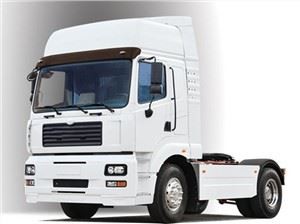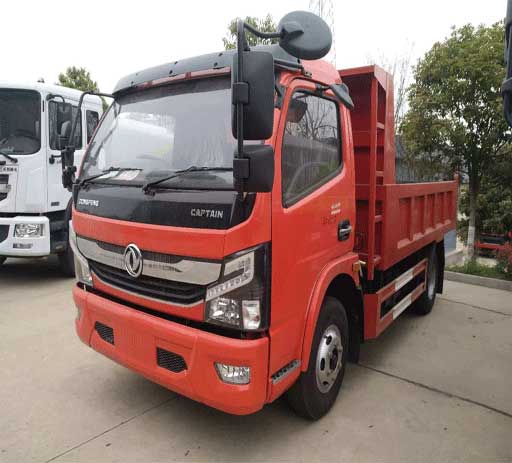Understanding Semi Tanker Trucks: An In-Depth Guide
Semi tanker trucks are essential vehicles used primarily in the transportation of liquids, including fuel, chemicals, and food products. These specialized trucks play a critical role in various industries by providing a safe and efficient means of transporting bulk liquids. This comprehensive article will explore the intricacies of semi tanker trucks, their features, benefits, and operational considerations, alongside practical examples and tips for their optimal use.
What is a Semi Tanker Truck?
A semi tanker truck, also known simply as a tanker truck, consists of a tractor unit (the semi) and an attached tank trailer designed for transporting liquids. The tractor unit’s powerful engine allows the truck to carry heavy loads, while the tank is engineered to ensure the safe transport of various types of liquids.
Key Features of Semi Tanker Trucks
- Tank Design: The tank is typically cylindrical, which helps maintain structural integrity under pressure and improves aerodynamics.
- Material: Tank materials vary based on the liquid being transported. Common options include aluminum for fuel transport and stainless steel for food products.
- Safety Systems: Semi tanker trucks often come equipped with safety features such as baffles to minimize sloshing, multiple emergency shut-off valves, and pressure relief systems to handle vapor pressure.
Types of Semi Tanker Trucks
There are several types of semi tanker trucks based on the substances they are engineered to transport:

- Fuel Tankers: Designed for transporting gasoline, diesel, and other fuels.
- Chemical Tankers: Used for hazardous liquids such as acids and alkalis, requiring special materials and safety features.
- Food Tankers: Stainless steel tankers that transport edible liquids like milk and juices, complying with strict hygiene standards.
Benefits of Using Semi Tanker Trucks
Semi tanker trucks offer numerous benefits to businesses engaged in the transportation of liquids:
- Efficiency: Their design allows for the transport of large volumes of liquid, reducing the number of trips needed.
- Safety: Features specifically designed to handle hazardous materials ensure safer transportation.
- Cost-Effectiveness: By transporting in bulk, businesses can save on fuel and operational costs.
Operational Considerations
When operating semi tanker trucks, several key considerations must be understood to maintain efficiency and safety:
Driver Training and Qualification
Professional drivers should undergo specialized training to handle tanker trucks due to their unique challenges. This training includes:
- Understanding weight distribution and vehicle handling.
- Knowledge of local, state, and federal regulations concerning the transport of hazardous materials.
- Emergency response protocols in case of spills or accidents.

Maintaining Compliance with Regulations
Transporting liquids, particularly hazardous materials, is governed by various regulations including:
- Department of Transportation (DOT): Enforces standards for transporting hazardous materials.
- Environmental Protection Agency (EPA): Regulations that can affect how and where certain liquids can be transported.
- State Regulations: Compliance with state-specific laws regarding tank truck operations.
Tips for Efficient Operations
Operating a semi tanker truck efficiently can save time and costs. Here are some practical tips:
Regular Maintenance
Implement a routine maintenance schedule that includes inspections of the following:
| Component | Maintenance Action |
|---|---|
| Tires | Regular pressure checks and tread inspections |
| Brakes | Check and replace as needed; inspect brake fluid levels |
| Tank Integrity | Inspect for leaks, dents, or corrosion |
Efficient Loading and Unloading Techniques

To ensure safety and efficiency during loading and unloading, consider the following:
- Use appropriate pumps and hoses designed for the liquid being transported.
- Implement best practices for securing the tank to prevent spills during transportation.
- Ensure that personnel are trained in safe loading/unloading procedures.
Technological Innovations in Semi Tanker Trucks
Advancements in technology have made semi tanker trucks safer and more efficient:
Telematics Systems
Many modern tanker trucks utilize telematics systems to:
- Monitor fuel consumption and optimize routes.
- Track vehicle location in real-time.
- Record driver behavior to enhance safety training.
Enhanced Safety Features
Recent innovations have introduced features such as:
- Electronic Stability Control (ESC) to minimize rollover incidences.
- Collision avoidance systems to enhance road safety.
- Rearview cameras and sensors for better visibility during tight maneuvers.
Environmental Considerations
As concerns for the environment grow, the transportation industry is also under pressure to reduce its carbon footprint. Several steps can be taken in this regard:
- Transitioning to fuel-efficient trucks that emit fewer pollutants.
- Utilizing alternative fuels such as biodiesel or compressed natural gas.
- Implementing route optimization strategies to reduce travel time and fuel usage.
Case Studies and Real-Life Examples
Understanding how semi tanker trucks operate in real-world scenarios can provide valuable insights. Below are two case studies:
Case Study 1: Fuel Distribution
A regional fuel distribution company using semi tanker trucks has increased efficiency by:
- Investing in telematics for route optimization, decreasing delivery times by 25%.
- Training drivers on eco-friendly driving techniques, reducing fuel consumption by 15%.
Case Study 2: Food and Beverage Transport
A food and beverage supplier adopted semi tanker trucks to enhance its operations, leading to:
- A reduction in transportation costs by 20% due to increased load capacity.
- Improved product safety through stringent compliance with food safety regulations.
Frequently Asked Questions (FAQ)
What is the capacity of a semi tanker truck?
The capacity of a semi tanker truck typically ranges from 5,000 to 10,000 gallons, depending on the type of liquid being transported and regulations.
Are semi tanker trucks safe?
Yes, semi tanker trucks are designed with multiple safety features, though they require skilled operators and adherence to safety regulations to mitigate risks.
How do you maintain a semi tanker truck?
Regular inspections of critical components like the tank, brakes, tires, and hoses are essential. Additionally, a routine maintenance schedule should be followed.
What types of liquids can semi tanker trucks transport?
Semi tanker trucks can transport a variety of liquids, including fuel, chemicals, water, and food-grade liquids like milk and juices.
What regulations govern semi tanker truck operations?
Regulations include guidelines from the Department of Transportation (DOT) and local state laws regarding the safe transportation of hazardous materials.
Can semi tanker trucks be used for local deliveries?
Yes, semi tanker trucks can be used for both long-haul and local deliveries, depending on the demand and logistics of the transportation needs.
